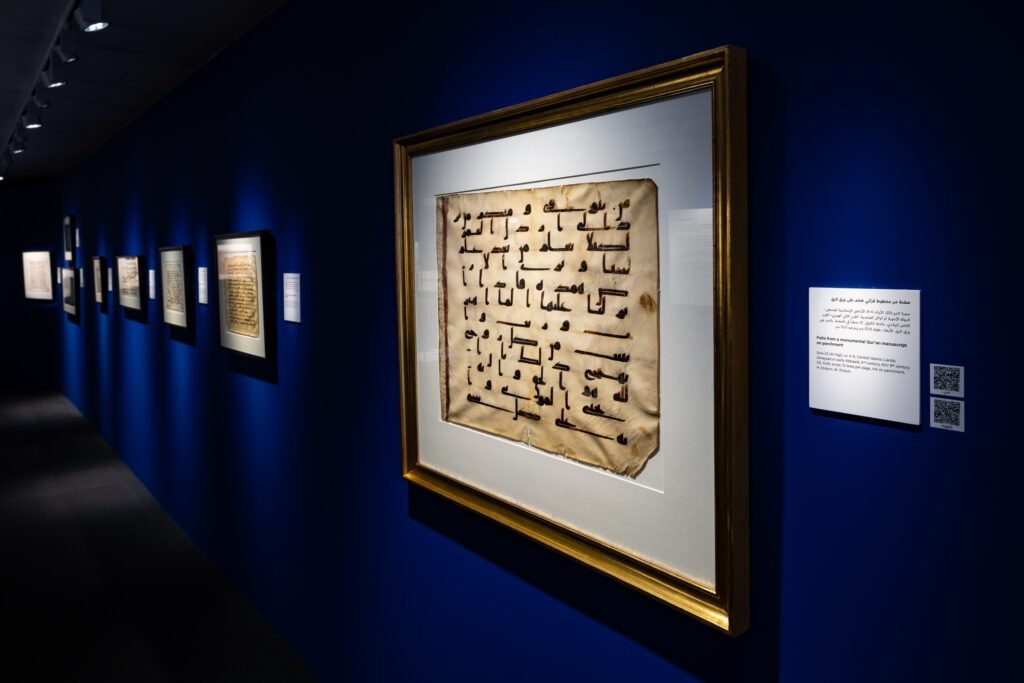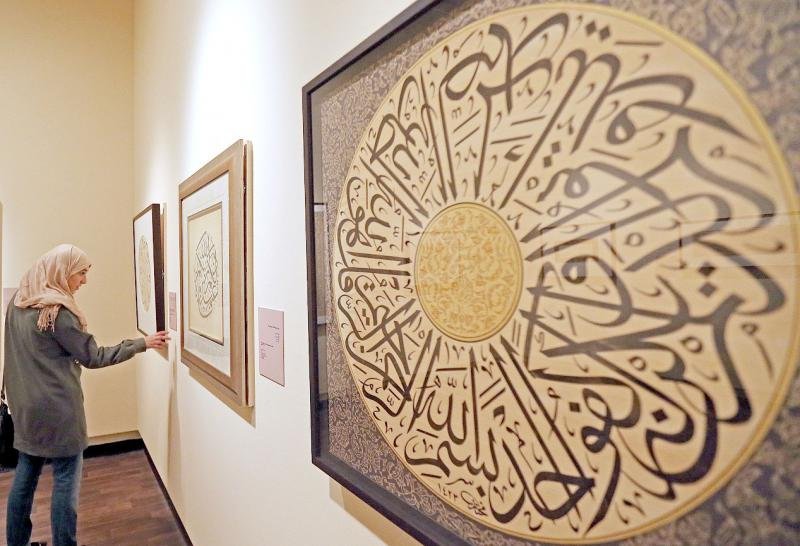Sharjah, UAE – The much-anticipated exhibition, ‘Calligraphy Across Cultures,’ has officially opened at the Sharjah Art Foundation. With participation from artists from 15 different countries, the exhibition showcases the powerful impact of Arabic calligraphy and its influence on diverse cultures around the world. The exhibition is a unique opportunity to explore the evolution of calligraphy and witness how this art form connects various regions and people through centuries of history.
A Rich Cultural Experience
Visitors to the exhibition are in for a treat, as they get a chance to see over 100 pieces of artwork that blend traditional Arabic calligraphy with modern techniques. The exhibition doesn’t just focus on the history of Arabic calligraphy, but also its profound influence on global art, from Asia and Europe to the Americas.
The artists featured in the exhibition come from a wide array of backgrounds, including those who are rooted in Arabic traditions and others who have been inspired by the beauty of Arabic script. These works range from intricate manuscripts to contemporary pieces, each displaying a unique interpretation of calligraphy and its cultural significance.

Bridging the Gap Between East and West
One of the main themes of the exhibition is the ability of Arabic calligraphy to bridge cultural divides. The influence of Arabic script has spread far beyond the Middle East, having shaped the calligraphic traditions in regions like Central Asia, the Indian subcontinent, and even parts of Europe.

The exhibition’s curators have done an excellent job of showcasing the interconnectedness of different cultures through calligraphy. Works on display reflect the cross-cultural exchanges that have taken place over centuries, especially during the periods of Islamic expansion. Visitors can explore how Arabic calligraphy influenced the artistic styles of India’s Mughal Empire, the Ottoman Empire, and even the Renaissance period in Europe.
The Beauty and Precision of Arabic Calligraphy
Arabic calligraphy is not just a form of writing but an art that requires immense skill, precision, and passion. The exhibition features works from calligraphers who have mastered the different styles, such as Diwani, Naskh, and Thuluth, each with its own distinct elegance and appeal. These intricate styles, often seen in religious texts, official documents, and architectural designs, are a testament to the richness of Arabic culture.
For many artists, Arabic calligraphy represents more than just visual art. It’s a form of expression that embodies a deep spiritual connection. Visitors will be able to learn about how calligraphy in the Islamic world is intertwined with faith, tradition, and even philosophy. The exhibition offers an educational insight into how the flow of Arabic script can convey emotions, thoughts, and beliefs, making it much more than just a method of communication.
Global Perspectives on Calligraphy
While the exhibition focuses primarily on Arabic calligraphy, it also highlights how different cultures have interpreted and adapted the script. From Iran’s Persian calligraphy, with its flowing, lyrical forms, to Turkey’s Ottoman-style calligraphy that features bold, artistic flourishes, each artist brings their own twist to the Arabic script. The global nature of the exhibition is evident in the diverse approaches to calligraphy that visitors can explore.
For example, some pieces combine Arabic calligraphy with elements of other artistic traditions, such as Japanese ink painting or Western modernism, showing how this ancient art form continues to inspire artists across the globe. The exhibition also provides a platform for contemporary artists to experiment with Arabic script, blending it with technology and digital media, bringing calligraphy into the 21st century.
A Unique Cultural Dialogue

The ‘Calligraphy Across Cultures’ exhibition is not just a celebration of Arabic calligraphy but also a platform for fostering cultural dialogue. It encourages conversations about the role of art in bridging different cultural, linguistic, and historical divides. The exhibition provides an excellent opportunity for both local and international visitors to learn about the significance of Arabic calligraphy in various cultures and appreciate its timeless beauty.
Organizers hope that the exhibition will inspire future generations of artists to continue exploring the world of calligraphy and its potential to connect people from different backgrounds. By providing a space for learning and sharing, ‘Calligraphy Across Cultures’ serves as a powerful reminder of how art can bring people together, creating mutual understanding and respect.
A Visit Worth Making
The ‘Calligraphy Across Cultures’ exhibition is open to the public at the Sharjah Art Foundation and will run until the end of the month. Visitors can expect not only to be amazed by the beauty and intricacy of the pieces on display but also to gain a deeper understanding of the cultural history behind each stroke of the pen.
Whether you are an art enthusiast, a student of history, or someone looking to explore new cultural experiences, this exhibition is a must-visit. It is a celebration of the shared human experience through the art of calligraphy, offering a glimpse into the diverse ways in which Arabic script has influenced the world.
Also read: Hatta Honey Farm Launches Ramadan Tastings













